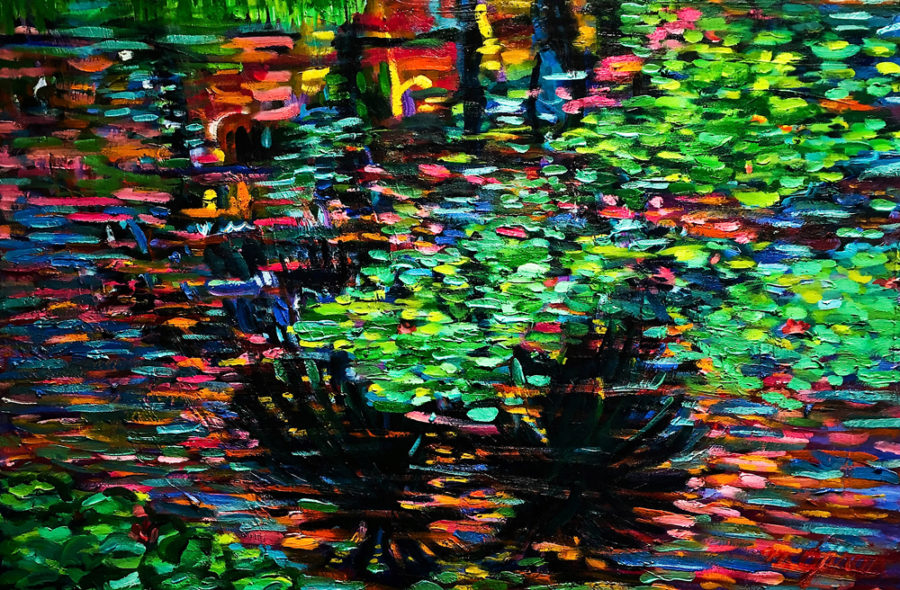1111111

111111111
Color, Lifeforce, and Place: Landscapes of Margaret Garcia
by Karen Mary Davalos
Over the past four decades, Margaret Garcia has developed her own color theory. She sees purple in flesh, sapphire blue in the trees, and aqua green in the urban pavement. While this perspective might suggest a psychedelic scene, Garcia is known for blending and combining paint to create harmonious and inviting landscapes or deeply reflective portraits. Her color theory requires an understanding of high key color radiant and how their luminous and lustrous qualities work together. The list of colors she recommends to the students of her oil painting workshop, which she teaches weekly at her studio and gallery in Highland Park, is evidence of her vision:
Violet
Dioxine Purple
Alizarim Crimson
Cadmium Red Deep
Cadmium Red Medium
Cadmium Orange
Cadmium Yellow Deep
Cadmium Yellow Medium
Cadmium Yellow light
Phtalo Green
Phtalo Blue
Ultramarine Blue
1111111
More tellingly, she finishes the list with important instructions about white, black, and somber colors. “You can buy a tube of white but you won’t use it for a while. No Black. No Umbers. No Siennas. No designer flesh tones.” Clearly, nothing is black or white for Garcia, but more significantly for her color theory, she can darken or lighten an image without black or white. She changes mood and tone, even chiaroscuro, by shifting relationships and proximities between colors, such as blue and red. When white appears in her landscapes, particularly her nightscapes, it has more than a hint of yellow. However, it is the contrasting use of blue and purple that make her whites illuminate a scene.
1111111

11111111
Margaret Garcia’s color theory most apparent in her Plein Aire paintings, which reveal the living pulse of the landscape. Through landscapes, Garcia uncovers the depth of life and the relationships of a place. Each work records the hidden energy of an environment; she captures the aura that emanates from objects and nature, buildings and palm trees. With Garcia’s eyes trained see lifeforce, we may all begin to appreciate the urgency of our connections to each other and this world. Her work will enliven any space with its vibrancy and harmonics attuned to life itself.
Karen Mary Davalos is professor of Chicano and Latino Studies at the University of Minnesota, Twin Cities. She has written four books about Chicana/o art. She currently serves on the board of directors at Self Help Graphics & Art.
